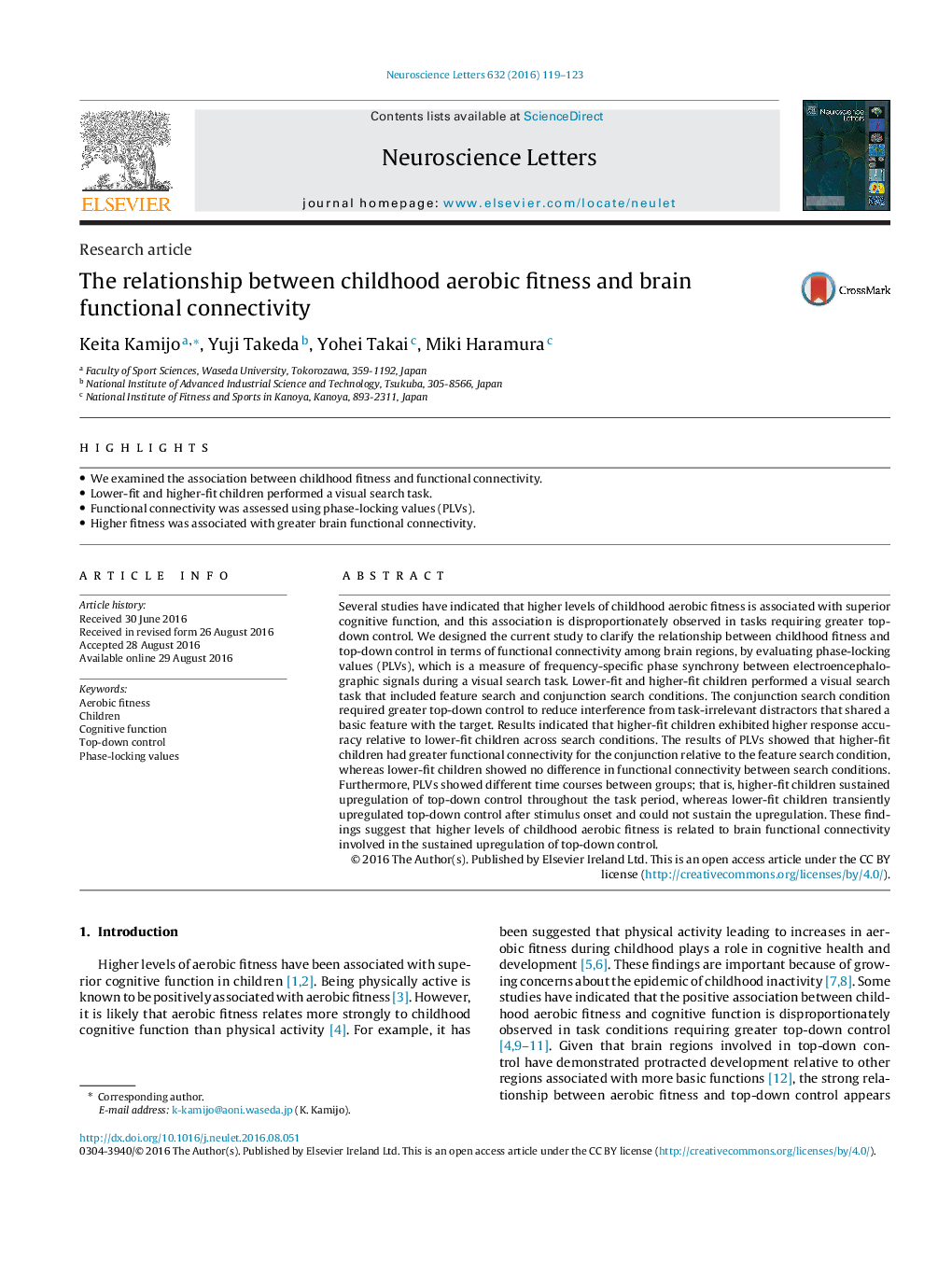| Article ID | Journal | Published Year | Pages | File Type |
|---|---|---|---|---|
| 6278941 | Neuroscience Letters | 2016 | 5 Pages |
Abstract
Several studies have indicated that higher levels of childhood aerobic fitness is associated with superior cognitive function, and this association is disproportionately observed in tasks requiring greater top-down control. We designed the current study to clarify the relationship between childhood fitness and top-down control in terms of functional connectivity among brain regions, by evaluating phase-locking values (PLVs), which is a measure of frequency-specific phase synchrony between electroencephalographic signals during a visual search task. Lower-fit and higher-fit children performed a visual search task that included feature search and conjunction search conditions. The conjunction search condition required greater top-down control to reduce interference from task-irrelevant distractors that shared a basic feature with the target. Results indicated that higher-fit children exhibited higher response accuracy relative to lower-fit children across search conditions. The results of PLVs showed that higher-fit children had greater functional connectivity for the conjunction relative to the feature search condition, whereas lower-fit children showed no difference in functional connectivity between search conditions. Furthermore, PLVs showed different time courses between groups; that is, higher-fit children sustained upregulation of top-down control throughout the task period, whereas lower-fit children transiently upregulated top-down control after stimulus onset and could not sustain the upregulation. These findings suggest that higher levels of childhood aerobic fitness is related to brain functional connectivity involved in the sustained upregulation of top-down control.
Related Topics
Life Sciences
Neuroscience
Neuroscience (General)
Authors
Keita Kamijo, Yuji Takeda, Yohei Takai, Miki Haramura,
